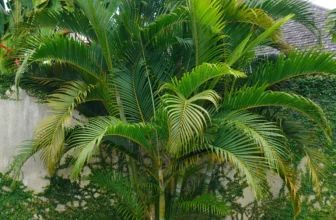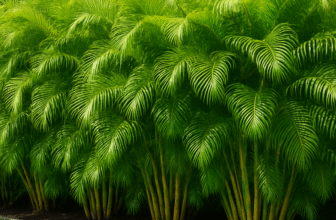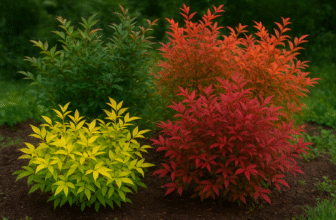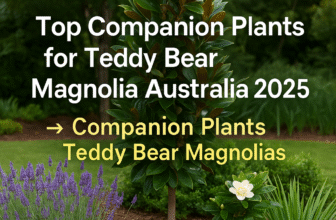Nandina Domestica, also known as Sacred Bamboo in Australian gardens. From climate-friendly varieties to pruning tips and seasonal care, this guide covers it all.
What is Nandina Domestica?
Nandina Domestica, commonly called Sacred Bamboo, is an evergreen shrub native to East Asia. Despite its common name, it is not a true bamboo. It is valued for its feathery foliage, vibrant red berries, and seasonal colour changes.
In Australia, Nandina has become popular in NSW, QLD, VIC, and WA due to its adaptability and low-maintenance nature. It grows well in gardens, containers, and hedges, making it ideal for both small and large outdoor spaces.
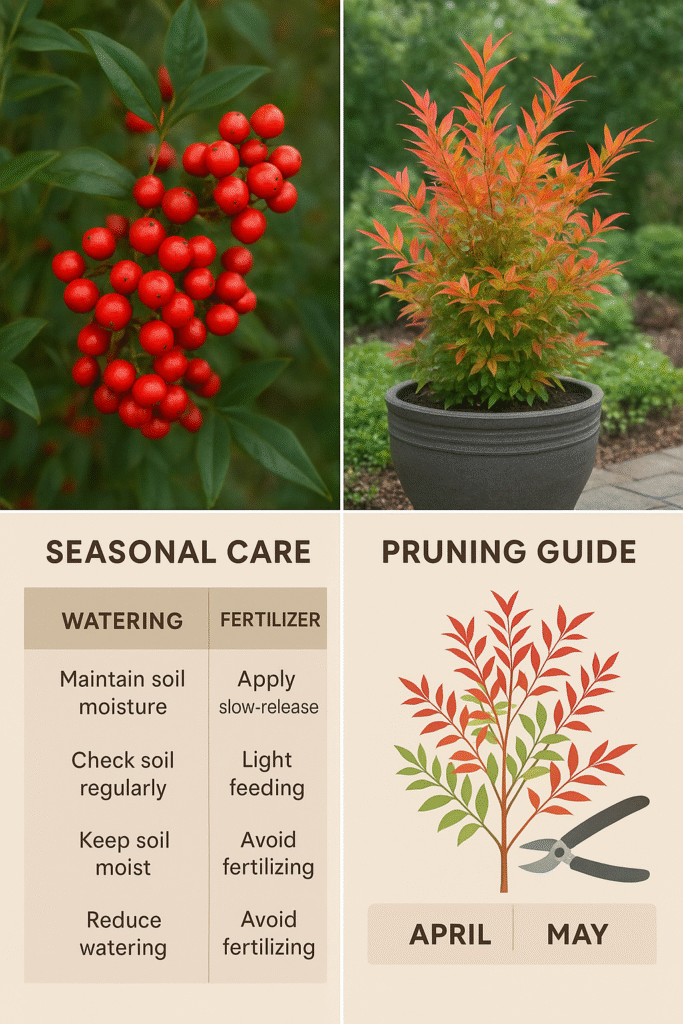
Why Aussies Love Nandina
- Climate Fit: Thrives in Australian temperate and subtropical zones.
- Low Maintenance: Requires minimal watering and pruning.
- All-Season Appeal: Foliage changes colour with the seasons; bright red berries appear in winter.
- Versatility: Works for hedges, borders, and container planting.
- Wildlife-Friendly: Berries attract birds.
Best Nandina Varieties for Australian Gardens
| Variety | Height | Foliage Colour | Best Use | Notes |
|---|---|---|---|---|
| Firepower | 1–1.2 m | Bright red leaves in winter | Small hedges, container gardens | Slow-growing, compact |
| Gulf Stream | 1.5–2 m | Yellow-green turning red | Garden beds, borders | Tolerates full sun |
| Moon Bay | 2–3 m | Deep green | Screening & privacy | Dense growth |
| Obsessed | 1–1.5 m | Red throughout winter | Decorative hedges | Drought-tolerant once established |
| Harbour Dwarf | 0.8–1 m | Green to bronze | Pots, small gardens | Perfect for urban gardens |
Ideal Sun, Soil & Watering Conditions
| Condition | Recommendation | Notes |
|---|---|---|
| Sunlight | Full sun to partial shade | Full sun gives the best foliage colour |
| Soil | Well-drained, sandy loam or loamy soil | Avoid waterlogged areas |
| Watering | Moderate | Reduce in winter; keep soil moist in first year |
| Fertiliser | Balanced slow-release | Use Nandina Care Australia tips for fertiliser timing |
Climate Zones:
- NSW & VIC: Ideal for borders, hedges, and potting.
- QLD & WA: Prefers partial shade in hot summer areas.
- Tasmania: Grow in sheltered spots to avoid frost damage.
Reference: Australian National Botanic Gardens – Nandina
How to Plant Nandina in Pots & Garden Beds
Planting in Garden Beds
- Choose a well-drained location.
- Dig a hole twice the width of the root ball.
- Mix garden soil with compost or organic matter.
- Place the plant, crown level with soil surface.
- Water well and mulch around the base.
Planting in Pots
- Select a container at least 30 cm deep.
- Use well-draining potting mix.
- Add a layer of gravel at the bottom for drainage.
- Fertilise lightly in spring.
Tip: Containers make Nandina portable for patios and balconies and allow better control over watering.
Seasonal Care Guide
| Season | Care Tips | Notes |
|---|---|---|
| Spring | Fertilise with slow-release, prune lightly | Encourage new growth |
| Summer | Water deeply once or twice a week | Mulch to retain moisture |
| Autumn | Remove dead leaves, thin branches | Prepare plant for winter |
| Winter | Protect from frost | Birds enjoy berries |
Reference: Gardening Australia – Seasonal Plant Care
Pruning Tips for Dense, Colourful Foliage
- When to prune: Late winter to early spring.
- How to prune: Remove dead or damaged branches, thin crowded areas, shape top and sides.
- Tools: Sharp secateurs, gloves, hedge trimmers for larger plants.
Pro Tip: Regular pruning stimulates bright new foliage and keeps shrubs healthy.
Landscaping Ideas for Homes & Driveways
- Privacy Hedges: Plant 3–4 Nandina per metre for dense coverage.
- Borders & Garden Beds: Mix varieties like ‘Firepower’ and ‘Gulf Stream’ for seasonal colour contrast.
- Container Displays: Use ‘Harbour Dwarf’ in pots on patios and verandahs.
- Driveway Edging: Use tall varieties like ‘Moon Bay’ for elegance and formality.
| Location | Suggested Variety | Number per metre | Notes |
|---|---|---|---|
| Driveway | Moon Bay | 2 | Maintain 1.5–2 m height |
| Patio Pot | Harbour Dwarf | 1–2 | Compact & colourful |
| Garden Bed | Firepower + Gulf Stream | Mix | Seasonal contrast |
Internal Link Suggestions: Nandina Domestica Hedging Ideas | Best Fertiliser for Nandina Domestica
Troubleshooting Common Nandina Issues
| Problem | Cause | Solution |
|---|---|---|
| Yellow Leaves | Overwatering, poor soil drainage | Reduce watering, improve soil drainage |
| Leaf Drop | Frost, drought, or transplant shock | Protect from frost, water during dry periods |
| Root Rot | Waterlogged soil | Repot or improve drainage, prune affected roots |
| Pests | Aphids, scale insects | Spray neem oil or insecticidal soap |
Internal Link: Nandina Pests & Diseases Australia Care & Fixes
References & External Links
- Australian National Botanic Gardens – Nandina
- Gardening Australia – Nandina Plant Care
- Royal Horticultural Society – Nandina Guide
FAQs: Nandina Domestica — Australian Gardeners’ Questions
Can Nandina survive Australian summers?
Yes, it thrives in full sun to partial shade. Mulching helps retain moisture during hot weather.
How fast does Nandina grow?
Compact varieties grow around 20–30 cm each year, while larger types grow faster in warm Australian climates.
Are Nandina berries toxic?
Berries are mildly toxic to pets and humans if eaten in large quantities. Keep berries away from children and animals.
Can Nandina be used in containers?
Yes! Dwarf types like ‘Harbour Dwarf’ work perfectly in pots. Use well-draining soil and water regularly.
How often should I prune Nandina?
Prune once a year in late winter or early spring. Light trimming can be done anytime for shaping.


